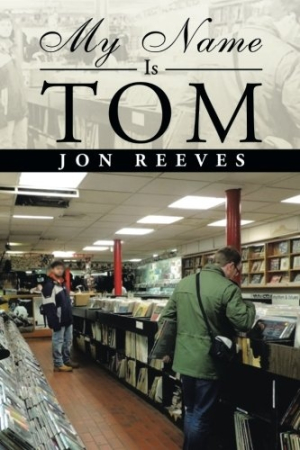My Name Is Tom
An obsession with music leads to the rave scene in this sharp and appealing coming of age story.
Jon Reeves’s My Name is Tom is a contemporary British coming-of-age story. Thomas Luke Joyce is a generally average young man, if distinguishable by his obsession with music, chiefly the alternative rock and New Wave of the 1980s and ’90s.
Growing up somewhere in “small-town England,” Tom begins collecting albums when he’s twelve, spending time at the local record shop and saving up his pitiable earnings for seven-inch singles by bands like the Style Council and the Smiths. Rare and signed albums bolster his collection. Alas, Tom’s amazing collection comes under threat when he gets involved in the burgeoning rave scene. Although he loathes the monotony of the repetitive electronic music, he admires the culture for what he thinks it represents—an underground anarchist’s movement. And Ecstasy, the use of which is practically required to be fully immersed in the whole experience, doesn’t come cheap. Tom begins to chip away at his marvelous collection, selling his records to pay for his new, destructive habit, and gets himself in a dangerous situation with drug dealers.
What saves Tom—and the novel—from spiraling darkly out of control is his keen self-awareness and sharp, dry sense of humor. He knows when he’s stepped over a line—pulling himself back is the challenge. Dialogue is smart and tight. There are some laugh-out-loud moments, as when Tom tries to charm a goofy record collector who speaks anachronistically, using words like “verily” and “forsooth,” into selling back some of Tom’s precious vinyl. Creative descriptions throughout such as, “My scooter rarely got over thirty miles an hour, and it constantly sounded like a kraken being released,” enrich the storytelling, and are evidence of a strong, unique voice.
At times the prose relies too much on exposition and gets repetitive, though even textual echoes serve to illustrate Tom’s obsessive nature and single-minded focus. The denouement’s twist, involving Tom’s straitlaced father and some of his friends and associates, might strain credulity, but it is also exciting and cinematic.
Generation X readers who came of age listening to synthpop bands, or who appreciate the music and culture of that time, will enjoyMy Name is Tom and its likable, sometimes scattered hero. Fans of Nick Hornby and other humorous “lad lit” that focuses on boyish men with obsessions will also relish this deep dive into the allure and pitfalls of rave culture.
Reviewed by
Olivia Boler
Disclosure: This article is not an endorsement, but a review. The publisher of this book provided free copies of the book and paid a small fee to have their book reviewed by a professional reviewer. Foreword Reviews and Clarion Reviews make no guarantee that the publisher will receive a positive review. Foreword Magazine, Inc. is disclosing this in accordance with the Federal Trade Commission’s 16 CFR, Part 255.

